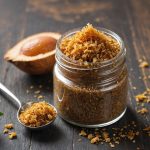Understanding Winter Sock Materials
When choosing winter socks, materials play a critical role in their effectiveness. A common choice is wool versus synthetic fibers, each offering unique benefits. Wool is renowned for its warmth, moisture-wicking abilities, and natural insulation. It naturally regulates temperature by drawing moisture away from the skin, keeping feet comfortable and dry.
Synthetic fibers, such as polyester or nylon, offer durability and enhanced moisture-wicking properties. These fibers are often engineered to improve the breathability of socks, ensuring warmth without overheating. The quick-drying nature of synthetics can be particularly beneficial in wet conditions.
In parallel : Eco-Friendly Laundry Tips: Expert Care for Your UK-Made Delicate Fabrics
For those seeking enhanced performance, blended materials are an excellent option. Combining wool’s warmth with the durability of synthetic fibers can provide the best of both worlds. Blended socks often offer improved moisture management, increased longevity, and better overall comfort.
When weighing wool against synthetic options, consider the specific conditions you’ll face and your personal preferences for warmth, moisture control, and durability. This decision can significantly impact your comfort during chilly winter months, helping you stay warm and dry.
Also to discover : The Ultimate Guide to Flawlessly Styling Synthetic Wigs for a Memorable Night Out in London
Insulation and Thermal Ratings
Understanding insulation and thermal ratings is crucial in selecting the best winter socks. Insulation refers to how well a sock retains warmth by trapping heat close to your skin. Generally, thicker materials provide better insulation, but this may depend on the sock’s composition.
When evaluating thermal ratings, look for terms such as TOG (Thermal Overall Grade), which indicates the sock’s effectiveness at retaining body heat. Socks with higher TOG ratings often offer superior warmth, an essential feature for extreme cold weather.
Several factors influence insulation effectiveness, including material density and the sock’s ability to manage moisture. For instance, wool naturally insulates better than many synthetic fibers due to the unique structure of its fibers, which traps heat effectively. However, synthetic materials might excel in moisture-wicking, ensuring feet remain dry and comfortable.
When considering insulation, assess the environment you’ll wear the socks in. For freezing temperatures, opt for higher thermal ratings. Conversely, milder climates may require less insulation, allowing for greater breathability and comfort. Tailoring your choice based on these factors ensures optimal warmth in various conditions.
Moisture Management and Comfort
In winter socks, moisture-wicking capabilities are essential for maintaining dry feet. As you navigate cold weather, socks that efficiently remove moisture can prevent discomfort and potential health issues, such as frostbite. The role of moisture management is to pull sweat away from the skin, keeping your feet dry and enhancing overall comfort.
A sock’s breathability is another crucial factor, as it allows air to circulate around your feet, preventing them from overheating. Breathable materials are often lightweight, making them ideal for daily wear in mild to moderate winter conditions. For those particularly concerned with moisture, selecting socks with enhanced moisture-wicking properties is recommended.
When choosing winter socks, consider the balance between breathability and insulation. Socks that excel in both areas will better regulate temperature, offering warmth without sacrificing comfort.
Ensure the socks fit snugly and do not bunch up, as this can hinder moisture-wicking abilities and reduce overall comfort. Prioritizing these qualities in winter socks will ensure optimal foot health during the cold season, allowing you to focus on your winter activities with ease.
Fit, Sizing, and Layering Techniques
Achieving the perfect fit for winter socks is crucial for maintaining warmth and comfort. A well-fitting sock not only enhances insulation but also prevents blisters by minimizing friction. Proper sock sizing ensures that the heel of the sock aligns perfectly with your heel, providing optimal coverage and support. To determine your size, measure your foot’s length and width, comparing the measurements with the brand’s sizing chart for accuracy.
When it comes to layering socks, this technique can enhance warmth, especially in extremely cold conditions. The key is to layer correctly: start with a lightweight moisture-wicking sock close to the skin, followed by a thicker insulating sock. This combination ensures that moisture is drawn away from the foot while heat is retained, creating an efficient thermal barrier.
Avoid layering multiple thick socks, as this can restrict blood circulation and lead to discomfort. Instead, opt for a balance that allows your feet to move freely while staying warm. Embracing these fit, sizing, and layering techniques will keep your feet cozy and protected, whatever the winter throws your way.
Popular Winter Sock Brands and Reviews
Choosing the right winter sock can greatly enhance your cold-weather experience. Leading winter sock brands in the UK are renowned for their quality and performance. Notable names include Smartwool, Darn Tough, and Bridgedale. These brands excel in balancing warmth, moisture-wicking, and durability, catering to diverse winter needs.
Consumer product reviews often highlight specific features, such as reinforced heels and toes, that enhance longevity. Smartwool is praised for its Merino wool blend, offering exceptional warmth and comfort. Darn Tough stands out with its lifetime guarantee, appreciated for superior construction and fit.
In comparing features and price points, an interesting observation is that premium brands like Smartwool tend to offer higher warmth ratings, justifying a higher price. Bridgedale, while slightly more affordable, focuses on blended materials to provide a balance of comfort and performance.
When researching winter socks, it’s beneficial to explore consumer opinions and expert ratings. They often reveal insights into wear and fit, helping make informed decisions. Overall, evaluating what top brands offer ensures you find a sock that meets your winter needs, balancing quality with budget.
Additional Features to Consider
When evaluating winter sock options, it’s essential to explore extra features and innovations in sock technology. Modern advancements have enhanced comfort and durability, making socks a strategic choice for cold-weather wear.
Many socks now incorporate innovative technologies such as seamless knitting and zoned cushioning. These features minimise friction, reducing the risk of blisters while providing targeted support in high-impact areas. Reinforced heels and toes contribute to increased durability, ensuring the socks withstand rigorous use over time.
Some socks offer advanced moisture-wicking fibres, integrating nanotechnology to further expedite moisture movement away from the skin. This not only maintains dryness but also prevents unpleasant odours, a significant appeal for active individuals.
When selecting winter socks, consider additional elements like arch support and extra padding. These features enhance foot comfort during prolonged wear and intense activities. Furthermore, thermal threads are often used to boost warmth, complementing the sock’s primary insulation properties.
It’s beneficial to prioritise socks with these added features for an improved winter experience. Understanding these extra features can help you make informed decisions, optimising comfort and performance during the chilly months.
Visual Aids and Practical Shopping Tips
Shopping for winter socks can be a daunting task, especially with the variations in sock materials, insulation, and brands. Here are some practical shopping tips and visual aids to ease the process.
Shopping Tips
- Visual Aids: Before purchasing, examine the product through photos or videos. These can demonstrate sock thickness, texture, and details like reinforced heels.
- In-store Experience vs Online Shopping: If you’re near a store, try socks on to ensure a snug fit. Online shopping allows a broader selection and often includes customer reviews for insight. Look for websites offering size guides and return policies, enhancing confidence in your purchase.
Best Practices
Caring for your winter socks extends their lifespan and maintains their effectiveness. Follow these best practices:
- Washing Instructions: Check manufacturer instructions; some materials require hand washing or air drying to prevent damage.
- Storage: Keep socks in a cool, dry place to maintain their shape and freshness.
With these shopping tips and maintenance practices, finding and enjoying the perfect winter socks becomes a simpler, more enjoyable experience.











